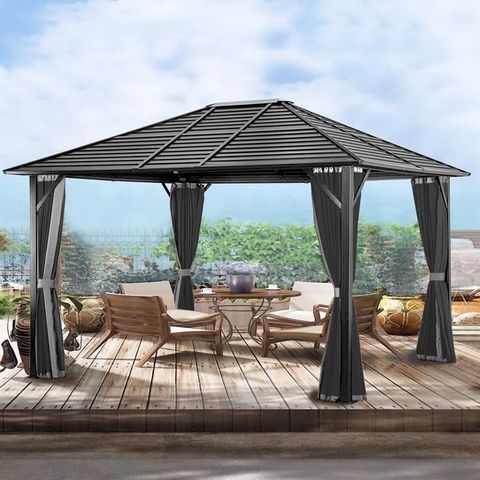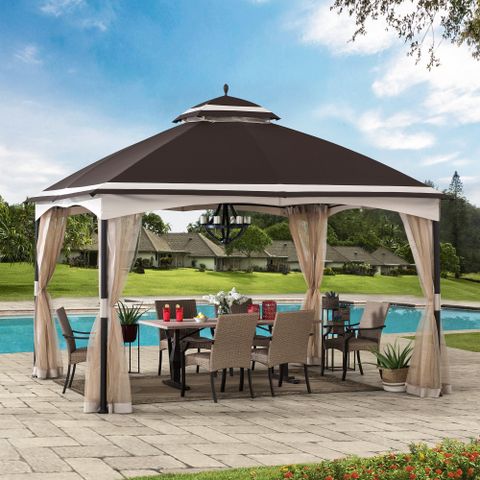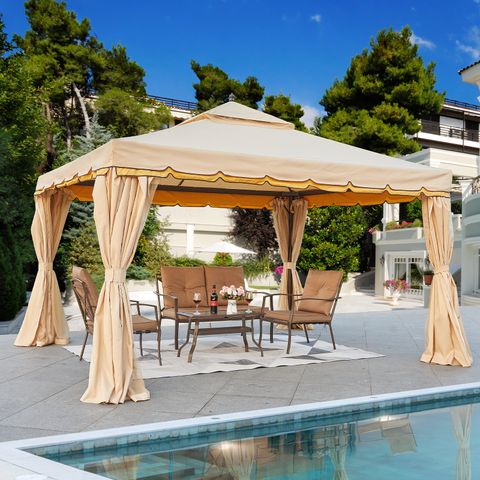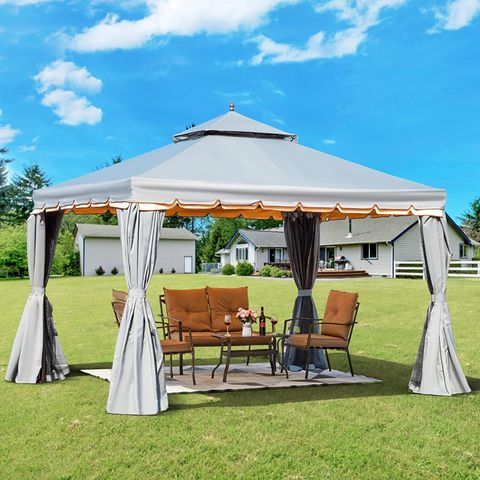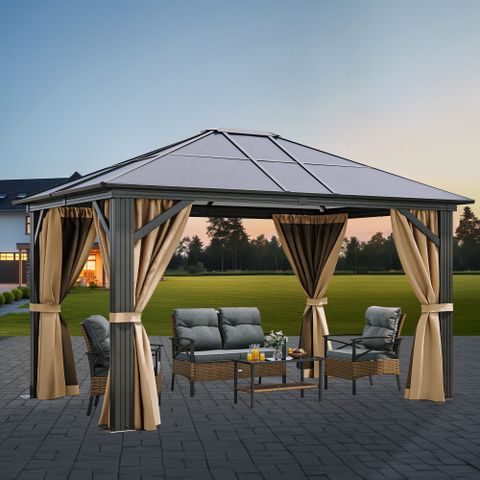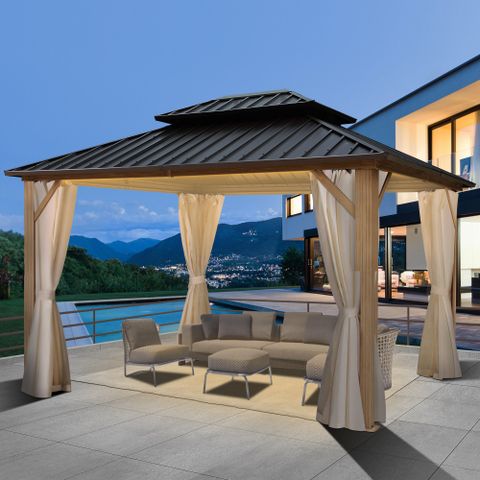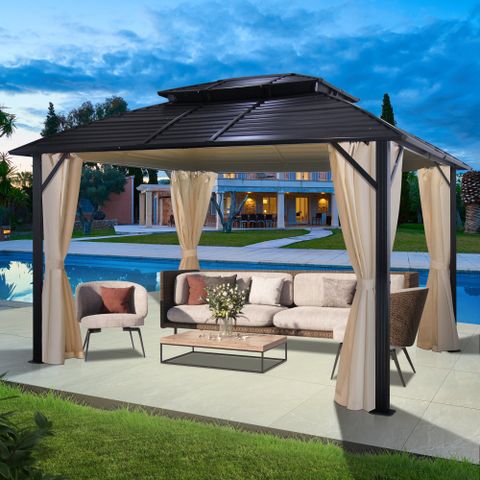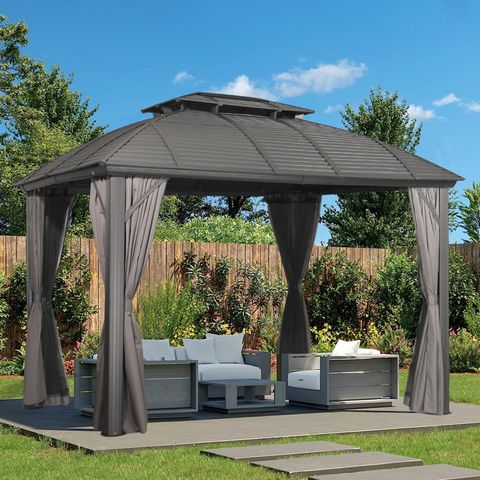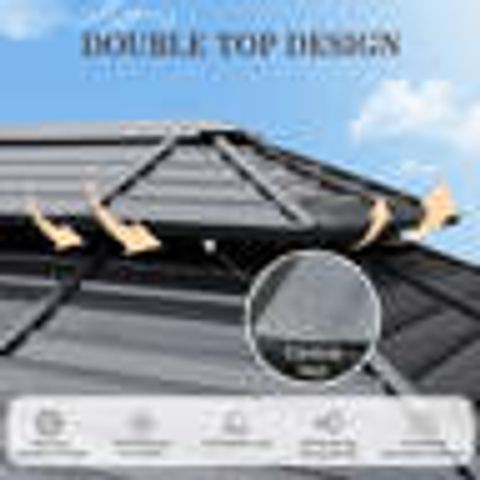Hey everyone, it’s your go-to gazebo guru, back at it again! Today, we’re diving deep into the often-overlooked world of gazebo upkeep, specifically focusing on keeping your Himari gazebo in tip-top shape, ready to withstand whatever Mother Nature throws its way. We’ll cover everything from the materials your gazebo is made from to the simple steps you can take to ensure it stands strong for years to come. Let’s get started, shall we?
A Himari gazebo is more than just a pretty addition to your backyard; it’s a sanctuary, a place to relax, entertain, and enjoy the great outdoors. But like any outdoor structure, your gazebo is constantly battling the elements. Rain, sun, wind, and snow can all take their toll, and without proper care, your Himari gazebo’s lifespan could be dramatically shortened. That’s why understanding how to protect your investment is so crucial. This guide will give you the inside scoop on how to keep your Himari gazebo weathering the storm, season after season. We’ll explore everything you need to know, from material selection to regular maintenance, ensuring your gazebo remains a beautiful, functional space for you and your loved ones.
Understanding Your Himari Gazebo’s Materials: The Foundation of Durability
The first step in protecting your Himari gazebo is understanding what it’s made of. Himari gazebos typically come in a few different material options, and each has its own strengths and vulnerabilities.
- Aluminum: This is a very common choice. It’s lightweight, resists rust, and requires minimal maintenance. However, it can be susceptible to dents or damage from high winds or severe weather.
- Steel: Steel gazebos are known for their strength and stability. They can withstand heavy winds and snow loads better than aluminum. The downside is that steel is prone to rust if not properly treated or protected.
- Wood: Wood gazebos offer a classic, aesthetic appeal. They’re often made from cedar, redwood, or pressure-treated lumber. Wood requires more maintenance than metal, including regular staining or sealing to protect against rot, moisture, and insect damage.
Knowing the material of your gazebo is the first step to understanding its durability and how to maintain it.
Shielding Against the Sun: UV Protection and Fabric Care
Sunlight, particularly UV rays, can be a silent enemy of your gazebo. It can fade and degrade the fabric of your roof, and also cause wood to dry out and crack. Here’s how to fight back:
- Fabric Treatment: Many Himari gazebos come with fabric that’s treated to resist UV rays. However, this treatment can wear off over time. Consider applying a fabric protectant specifically designed for outdoor use every year or two, or as per the manufacturer’s recommendation.
- Roof Material Matters: The material of your roof plays a huge role. Canvas and polyester fabrics are more prone to sun damage than materials like Sunbrella, which are specifically designed for outdoor use and excellent UV protection.
- Strategic Placement: If possible, position your gazebo where it gets some shade, particularly during the hottest part of the day. This will help prolong the life of your fabrics and other materials.
Weathering the Wind: Anchoring and Structural Integrity
Wind is one of the most significant threats to a gazebo, and it’s crucial to ensure your Himari gazebo is properly anchored. Here’s what to look at:
- Anchoring Methods: Most gazebos come with stakes or anchors to secure them to the ground. Make sure you use these, and that they’re appropriate for the ground type (e.g., soft soil vs. concrete). For very windy areas, consider upgrading to more robust anchoring systems, such as ground anchors specifically designed for gazebos or even bolting it to a deck or patio.
- Regular Inspections: Regularly inspect the frame and connections of your gazebo, especially after heavy winds. Look for any loose bolts, cracks, or signs of stress. Tighten any loose connections and address any damage promptly.
- Consider Wind Rating: When purchasing, check the gazebo’s wind rating. This indicates the wind speed it can withstand. Choose a gazebo with a rating suitable for your location.
Rain, Snow, and Moisture Management: Preventing Water Damage
Moisture is another major concern. Rain and snow can lead to rust, rot, and mildew. Here are some tips:
- Proper Drainage: Ensure your gazebo’s roof design allows for proper water runoff. Check for any blockages in gutters or downspouts, if applicable.
- Waterproof Coatings: For wood gazebos, regularly apply waterproof sealant or paint to protect the wood from moisture. For metal gazebos, inspect the paint or coating for any chips or scratches and touch them up as needed to prevent rust.
- Snow Removal: In areas with heavy snowfall, remove snow from the roof of your gazebo, especially if you know a large snowfall is coming. Snow can accumulate and put a lot of weight on the structure.
- Ventilation: Good ventilation helps prevent moisture buildup. Consider the placement of your gazebo and, if possible, choose a design with vents to allow air circulation.
Routine Maintenance: The Key to Longevity
Regular maintenance is the single most important thing you can do to extend the life of your Himari gazebo. It’s not a one-and-done deal, but a continuous process.
- Cleaning: Regularly clean your gazebo, removing dirt, debris, and bird droppings. Use mild soap and water, avoiding harsh chemicals that could damage the materials.
- Inspections: Conduct thorough inspections at least twice a year (spring and fall), or more frequently if you live in an area with extreme weather. Check for any signs of damage, wear, or loosening of bolts.
- Tightening and Repairs: Tighten any loose bolts or screws, and make any necessary repairs promptly. Don’t ignore small problems; they can quickly escalate into bigger, costlier issues.
- Seasonal Preparation: Before winter, take steps to protect your gazebo from snow and ice. This might include removing the fabric roof (if possible) or covering the entire structure with a protective tarp. In the spring, inspect your gazebo for any damage that occurred during the winter and make any needed repairs.
When to Seek Professional Help
While you can handle most of the maintenance tasks yourself, there are times when it’s wise to call in the professionals.
- Significant Structural Damage: If you notice any major cracks, significant rust, or other structural problems, don’t attempt to fix it yourself. Contact a qualified contractor or gazebo specialist.
- Complex Repairs: Some repairs, such as replacing a roof or fixing a severely damaged frame, may require specialized skills and equipment.
- Uncertainty: If you’re unsure about how to handle a particular repair or maintenance task, don’t hesitate to seek professional advice. It’s better to be safe than sorry. A professional can assess the situation and provide expert guidance.
Taking care of your Himari gazebo is an investment in your outdoor enjoyment. By understanding the materials, protecting it from the elements, and practicing regular maintenance, you can ensure that your gazebo weathers the storm and provides a beautiful, functional space for relaxation and entertainment for many years. Remember, a little bit of effort goes a long way in preserving your investment. So go out there, inspect your gazebo, and give it the love it deserves. Your backyard sanctuary will thank you for it, and so will your guests and family. Happy gazeboing, everyone!

